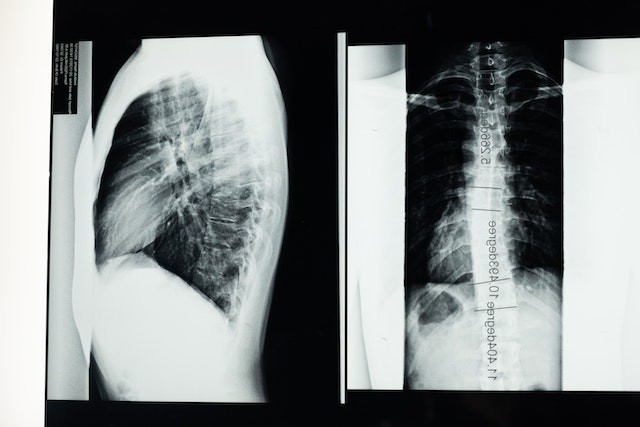A graduate student at the University of Cincinnati recently invented an adjustable brace for young patients who need repositioning of their curved spines, winning a prestigious award for her unique innovation.
A Good News Network report specified specifies that scoliosis affects seven million Americans each year, which is a "curvature in the spine" that frequently occurs before puberty.
The 2022 UC Innovation Quest Elevator Pitch Competition hosted by Lindner College of Business was won by a DAAP student!! Congratulations to Sangyu Xi, Industrial Design! She took first place & won BIG in the "Undergraduate Track" with her capstone project Airy Scoliosis Brace. pic.twitter.com/Mflv8R8uXf
— UC_DAAP (@UC_DAAP) April 14, 2022
Despite the large number of individuals affected, advancements in braces treating this particular medical condition have not changed since the late 1950s.
Common braces are inflexible, bulky, and quite noticeable to teenagers, which can deter many young people from wearing the device as frequently as they can.
ALSO READ: Efficacy of Intranasal Flu Vaccine with Nanoparticles Can Help in the Fight Against Influenza Virus

Scoliosis is a “curvature in the spine” that frequently occurs before puberty.
The Novel 'Airy' Prototype
That is the reason this student, Sangyu Xi, won the American James Dyson Award for devising a novel prototype known as "Airy."
This invention is a breathable, adjustable, and comfortable brace that can accommodate the growth of a patient for up to three years.
Airy is even recyclable and includes an app to track wear time and healing. Airy's exterior color can also be modified, or padding can be removed to be translucent, enabling young patients to wear the brace confidently.
Following treatment, patients can have their brace donated to third-world peers, or it can be recycled up to 10 times since no glue is used in the manufacturing process.
The app, according to a similar Input report said, enables physicians as well to communicate with patients in real-time on any adjustments to treatment plans.
A Unique Technique Against Scoliosis
Since developing Airy, the prototype has been tested on four teen patients at Cincinnati Children's Hospital, where feedback was extremely favorable.
This engineering and design student from China always knew she wanted to use her skills to develop something that could help an individual spend a different life.
Sangyo explained winning this national award means something to scoliosis patients who are attempting to call to people, "we want something new" that they want to wear and that can help them combat scoliosis.
In the future, she hopes to continue patient trials to improve further the prototype's design. She's planning to use the Dyson Award prize to employ a machine learning engineer to develop further the Airy app and an orthopedic mentor to help bring airy to market.
How Airy Works
Essentially, the perforations on the rails and brace enable patients to set up the brace at home. The web platform of this latest innovation produces a distinctive installation guide delivered to the patient's house and the product.
For this brace to be set up, according to the James Dyson Award website, a patient follows the guide, and the process promotes compliance.
More so, when the patient outgrows the brace, he can change it to be 4.2-inch longer so that it will suit him for at least three years.
Next, applying the "Grasshopper's topology," the structure of the brace is optimized, saving a huge amount of materials while keeping its strength.
Every brace piece of this invention is translucent, not to mention has a soft padding. The user might replace the padding to modify the brace's color or remove the padding to make it unseen or invisible.
Lastly, the student awardee integrated a monitor onto the brace to track the wearing time of the patient. More so, the patient and the doctor can access data to uncover compliance issues, not to mention communicate instantaneously about the revisions of treatment plans.
Information about the Airy Scoliosis Brace is shown on James Dyson Foundation's YouTube video below:
RELATED ARTICLE: 3D-Printed Back Brace Made of Carbon Nanotubes Detects Stress and Strain for Better-Fine-Tuning Scoliosis Treatment
Check out more news and information on Medicine & Health, and Technology in Science Times.














